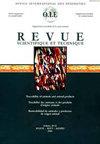Reducing risks of human exposure to antimicrobial resistance originating from livestock supply chains.
IF 1.9
4区 农林科学
Q2 VETERINARY SCIENCES
Revue Scientifique et Technique-Office International Des Epizooties
Pub Date : 2020-01-01
DOI:10.20506/rst.39.3.3199
引用次数: 0
Abstract
Antimicrobial resistance is one of the biggest health threats for both humans and animals. This justifies the need for a conceptual framework that provides an integrated assessment of the measures and strategies that can be applied within livestock supply chains to reduce the risks of human exposure to resistant pathogens. The aim of this study is therefore to provide a comprehensive supply- chain-based conceptualisation that describes the main measures and strategies to reduce the risks of human exposure to resistant pathogens. The conceptual framework presented in this study makes a distinction between on-farm and beyond-farm decision-making. The on-farm decision-making context focuses on the strategies that can reduce antimicrobial use. The beyond-farm decision-making context focuses on the prevalence of (pathogenic) microorganisms. The focus of this framework is on Western European food production systems. A panel of Dutch experts on antimicrobial issues assessed various aspects of the framework, including correctness, completeness and consistency. They concluded that the conceptual framework provides a sound theoretical basis for economic decision support for policy-makers to reduce the risks of human exposure to resistant pathogens originating from livestock supply chains.减少人类接触源自牲畜供应链的抗菌素耐药性的风险。
抗微生物药物耐药性是人类和动物最大的健康威胁之一。因此,有必要建立一个概念性框架,对可在牲畜供应链中应用的措施和战略进行综合评估,以减少人类接触耐药病原体的风险。因此,本研究的目的是提供一个全面的基于供应链的概念,描述了减少人类暴露于耐药病原体风险的主要措施和策略。本研究提出的概念框架区分了农场内和农场外的决策。农场决策环境侧重于减少抗菌素使用的策略。农场以外的决策环境侧重于(致病)微生物的流行。该框架的重点是西欧粮食生产系统。荷兰抗微生物问题专家小组评估了该框架的各个方面,包括正确性、完整性和一致性。他们的结论是,该概念框架为决策者减少人类暴露于源自牲畜供应链的耐药病原体的风险提供了可靠的理论基础。
本文章由计算机程序翻译,如有差异,请以英文原文为准。
求助全文
约1分钟内获得全文
求助全文
来源期刊
CiteScore
2.40
自引率
0.00%
发文量
22
审稿时长
>24 weeks
期刊介绍:
The Scientific and Technical Review is a periodical publication containing scientific information that is updated constantly. The Review plays a significant role in fulfilling some of the priority functions of the OIE. This peer-reviewed journal contains in-depth studies devoted to current scientific and technical developments in animal health and veterinary public health worldwide, food safety and animal welfare. The Review benefits from the advice of an Advisory Editorial Board and a Scientific and Technical Committee composed of top scientists from across the globe.

 求助内容:
求助内容: 应助结果提醒方式:
应助结果提醒方式:


